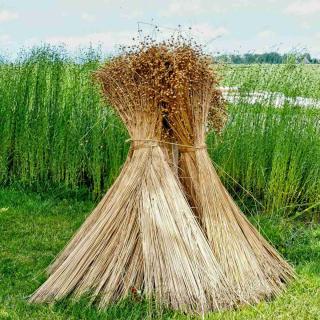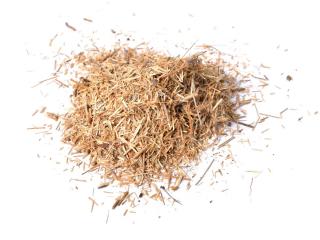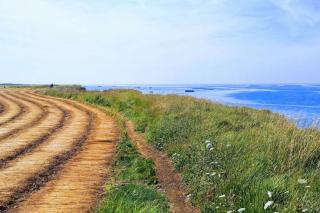

Flax mulch is a by-product of cultivating flax, and it turns out to be an excellent mulch for all plants.
It is the perfect soil cover for flower beds, around trees, in garden boxes and in the vegetable patch.
Typically, this type of mulch has the same benefits as other plant mulches:
 Helps plants settle in faster through avoiding erosion and soil compaction.
Helps plants settle in faster through avoiding erosion and soil compaction.However, it also has a few very specific advantages that other plant mulch types don’t have:
There are two types of flax mulch that are readily found on the market.

This is the flax most effective against slugs and snails, since it has sharp edges.
It’s a by-product of flax seed production. Seeds from the flax plant appear in many ancient and modern recipes, and as such, flax seeds are full of health benefits. Flax seeds are also pressed to extract an excellent natural wood preserver, flax oil. This type of flax mulch looks like husks of rice or wheat.

It’s actually similar to straw.
This can either come from straw collected when harvesting the seed pods, but another common source is rejected straw material from flax grown for thatching or fiber. The appearance of this type of flax mulch resembles short one-inch strands, kind of like dried blades of grass.
Both types of flax mulch are very light-colored, and they’ll both help disorient thrips naturally – a great added benefit in the vegetable patch!
Just like cocoa mulch, flax has a special reaction when you wet it for the first time. Indeed, when you’ve finished spreading the flax mulch into a one or two-inch layer (3 to 5cm), it’s important to thoroughly soak it once. You’ll notice that the flax forms a tight, fibrous structure after drying. This structure resists wind while staying permeable. Also, weeds have a harder time breaking through this “crust”.
When first wet, cellulose fibers soak water up and swell, interlocking with neighboring strands. It creates a mat of strands that weave in and out of each other. As it dries, the strands contract and tighten the surface of the layer of mulch. It’s almost like a woven material! Water and air can still pass through very easily, but wind won’t displace it.
This makes flax mulch an excellent choice for seaside gardens and places that tend to be very windy.
Read also on mulching:
If you use these straw mulches, you’ll be doing a deed for the environment, enhancing your garden and enriching your soil!